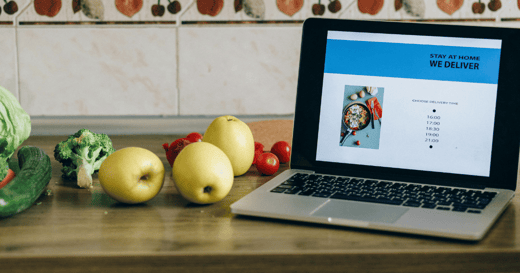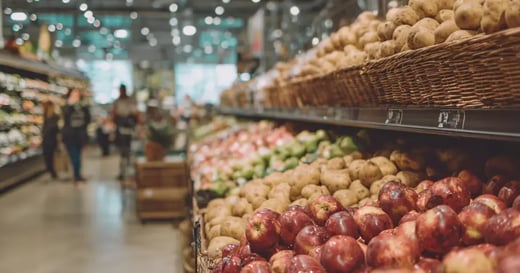It might feel impossible to break into the supermarket scene, with big box brands taking all the spotlight. But in recent years, almost a third of all grocery sales went to independent supermarkets. It can be a profitable business… but how can you operate your store to maximize your chances of success?
For independent supermarket owners, deciding which products to stock, marketing efficiently with limited budgets, retaining quality talent, and building customer loyalty can be challenging. Add in supply chain headaches, shrinking margins, and staying on top of food retail trends, and operating an independent supermarket becomes extremely demanding.
This post covers the basics of opening and operating an independent supermarket. We will discuss the basics of how you can get started, then dive into our list of tips for helping your store shine in the coming months and years.
How To Open an Independent Supermarket
If you dream of opening your own independent supermarket, you know you can’t just snap your fingers and make it happen. But how do you get started? Following a few key steps, you can set your store up for success. Some of the top steps you must follow to get started include:
- Create a Business Plan: Thoroughly plan your strategy, financials, hiring, inventory, and marketing efforts.
- Find a Good Location: Research demographics and traffic patterns to identify an ideal spot for your independent supermarket.
- Obtain Permits, Licenses, & Insurance: Ensure full legal and liability compliance by obtaining the right permits and licenses.
- Purchase Equipment: Invest in equipment, including shelves, refrigeration, and a modern point of sale (POS) system.
Following these steps, you can get started on the right foot with your supermarket. However, in this highly competitive, low-margin industry, you won’t necessarily find smooth sailing from there.
Some of the unique challenges facing supermarket owners are the challenge of managing perishable inventory, shifting consumer trends, thin profit margins, and limited brand awareness as a newcomer competing against major big box stores like Wal-Mart. However, independent markets can thrive by targeting niche audiences, promoting quality and local sourcing, and providing exceptional service.
With these insights and challenges in mind, let’s dive into our list of tips for how to operate an independent supermarket in the current climate.
1. Understand Your Market
Your success as an independent grocer — and a small business owner in general — depends on understanding your local market. Think beyond demographics: Who are your customers? What do they need from a supermarket, and how can you provide them with what they need?
Engage customers in your area and gather feedback on shopping experiences, perceptions of your competitors, product needs, and more. Once you open your doors, track sales data for insights on your bestselling products, seasonal shifts, and purchase patterns. You must also monitor your competitors’ offerings and promotions so you can counter effectively.
Related Read: Small Grocery Store Business Plan: 6 MAJOR Mistakes To Avoid
Understanding your market also means recognizing gaps competitors fail to address. Perhaps downtown shoppers need more grab-and-go options. Suburban families might respond to bulk-buy savings. Let community insights shape your niche. Lean into what makes your store stand out while delivering convenience and affordability based on what your area's shoppers truly value.
2. Engage in Creative Marketing
Even if you invest in exactly the right product mix and have the perfect pricing, your store will struggle to find its footing if customers don’t know you exist. As a result, marketing outreach is critical to the success of your independent supermarket. But how can you market your store effectively?
Related Read: 5 Supermarket Marketing Strategies To Implement and Win
Actively build community connections by engaging followers on social platforms. Post content like cooking demos, new product previews, or loyalty program updates. In-store events like tasting sessions and holiday-themed activations can also boost visibility and drive traffic to your store.
Another creative grocery marketing tactic is to seek potential partnerships with complementary businesses — cafes, bakeries, specialty food purveyors — to cross-promote your businesses. Offer a coupon for a nearby restaurant on your receipt print-outs, or offer certain protein shake deals only to customers who belong to the gym down the road. These efforts help knit your store into the fabric of your community and reach a larger audience.
You can also begin a customer loyalty program or email subscriber list, delivering personalized offers or rewards, helping keep your supermarket top-of-mind for your best customers.
3. Create a Customer Loyalty Program
As we briefly touched on in the last section, another tactic you might consider adopting when deciding how to operate your independent supermarket is implementing a customer loyalty program.
Cultivating loyal, devoted customers is vital for independent supermarkets. A tailored customer loyalty program enhances retention and provides valuable shopper insights that can help you refine your offerings further.
Design tiered programs where customers can earn points and unlock successive benefit levels like discounts or members-only products. Integrate easy digital signups and points tracking through your point of salesystem to make your loyalty program as simple and seamless as possible.
You should also personalize your loyalty program by sending bonus points or free gifts to celebrate customer birthdays. Prominently advertise loyalty perks in-store, online, and on receipts so customers understand the value of signing up for the program.
An effective loyalty program demonstrates your appreciation for your best customers and incentivizes them to keep shopping with your store. You can also optimize your program by continually assessing metrics like enrollment, redemption rates, and purchase activity.
4. Evaluate and Optimize Operations
Efficient operations are critical for all retailers, but with the narrow margins and high competition of the supermarket industry, they’re doubly important for independent supermarkets. This truth brings us to tip number four: Regularly evaluate and optimize your operations.
Review your practices and processes using staff feedback and POS data to identify bottlenecks that may hamper productivity or quality. You can then use these insights to streamline your store's fulfillment procedures, inventory management, storage organization, and technology infrastructure.
Cross-train employees to handle diverse functions like assisting customers, monitoring displays and cleanliness, ordering stock, and managing checkout. These cross-training practices will make scheduling staff to meet customer volumes easier, allowing you to rearrange staff into different roles on the fly if traffic fluctuates.
Assess your inventory management processes and tools. With strong inventory management processes, you can forecast demand and implement automated reorder alerts, helping you minimize waste from spoilage or overstocking without running into the flip-side issue of out-of-stocks.
5. Invest in a Modern POS System
Streamlining checkout and inventory management processes is crucial for your supermarket’s success. An advanced point of sale system specializing in grocery and food retail provides inventory visibility, loyalty program coordination, detailed sales reporting, and integrated payment processing to facilitate smooth transactions and store operations.
Related Read: 6 Essential POS Features for Your Supermarket System
Choose a modern cloud-based POS solution that seamlessly handles produce, integrates barcode scanners, accepts mobile payments by wallet or app, and prints custom labels. Real-time data syncs stock levels with every purchase, so your employees can always see what is in stock and what needs replenishment without leaving registers.
You may also want to invest in a POS system with built-in customer relationship management (CRM) tools. These tools help personalize engagement to nurture customer loyalty. More robust solutions, like IT Retail, have built-in customer loyalty program management, giving you all the features you need to run your loyalty program through your point of sale system.
Related Read: 5 Amazing Grocery Store POS Systems [Pricing and Reviews]
The right solution for your store will also scale with your business. A future-ready POS platform is a smart long-term investment, setting your independent supermarket up for success now and in the future.
Operating an Independent Supermarket
Following the tips outlined in this post will help you lay a solid foundation for your independent supermarket. With these best practices, the right tools, and a little luck, your store will be ready to run efficiently and profitably for years to come. One of the most important predictors of success for your store? Investing in the right point of sale solution.
The right POS solution ties your entire operation together: accurately weighing and pricing items, printing shelf life details on custom labels, providing real-time visibility into stock levels, tracking sales data and customer preferences, managing promotions and loyalty programs, securing transactions, and more.
IT Retail provides an integrated POS platform specifically built for independent supermarkets' needs. We offer tailored tools, like scale integration, barcode scanner compatibility, order management, self-checkout kiosks, and inventory insights. These features help you elevate your store and maximize your chances of success.
Schedule a demo of IT Retail today to see how our solution can help you operate your independent supermarket with ease.








 by Luke Henry
by Luke Henry
